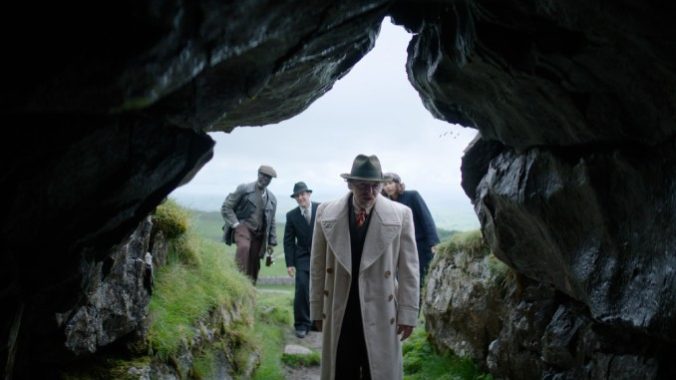Simon Pegg Charmingly Investigates Irrationality in Nandor Fodor and the Talking Mongoose

There have been many accounts of “talking” animals throughout history, most of them birds. But in the early 1930s, Hungarian researcher Nandor Fodor received a letter from an old colleague soliciting his opinion about a curious case from the Isle of Man and a talking mongoose named Gef. Nandor Fodor and the Talking Mongoose recounts Fodor’s investigation of this curious happening and the harrowing things he (Simon Pegg) found on the island.
But as Fodor’s advisor, Dr. Harry Price (Christopher Lloyd), writes in his own journal during his visit to the island, Gef is exceptionally bizarre, confounding even scientific observation. The Irving family, who have raised and housed this animal, call Gef an “earthbound spirit.” Neither wholly benevolent nor entirely malicious, Gef is amiable towards those who believe in him, suspicious of those who don’t, and always just out of sight. He speaks (voiced by Neil Gaiman) from the security of the shadows, underbrush or telephone box—seemingly omnipotent, full of warning and gossip. There isn’t a soul in the village who doesn’t have a Gef story: Some hear his voice on backroads or over a mysterious phone call. It will take everything Fodor knows and believes to ferret out a reasonable conclusion. Even with his assistant Anne (Minnie Driver) by his side bearing witness to these events, he’s still in jeopardy of losing his mind—perhaps even his soul.
For their part, Pegg and Driver do an exceptional job bringing the oddball venturers to life. Pegg is properly clipped, cynical and curious, going from scrutinizing to shocked in seconds. He Christoph Waltzes his way through an Austro-Hungarian accent that adds to his character’s self-consciousness as an outsider. He’s the proper man for this time, sure of his convictions, even if his knowledge is tenuous. Like any good paranormal investigator, his logic is part conjecture and conjuration. This makes Fodor overconfident in his reasoning, yet with the slightest prick, Pegg can make him deflate like a whoopee cushion.
Luckily, he has Anne to help him get back up again, though Anne herself is just now finding her footing after some years in Fodor’s employ. Driver has always been like a butterfly in flight, able to control whether she’s wobbly on the wing or calibrated and landed. She’s ideally suited to be Pegg’s Girl Thursday—just as sharp and capable as the next day’s girl but more easily flustered and starry-eyed.
-

-

-

-

-

-

-

-

-

-

-

-

-

-

-

-

-

-

-

-

-

-

-

-

-

-

-

-

-

-

-

-

-

-

-

-

-

-

-

-








































